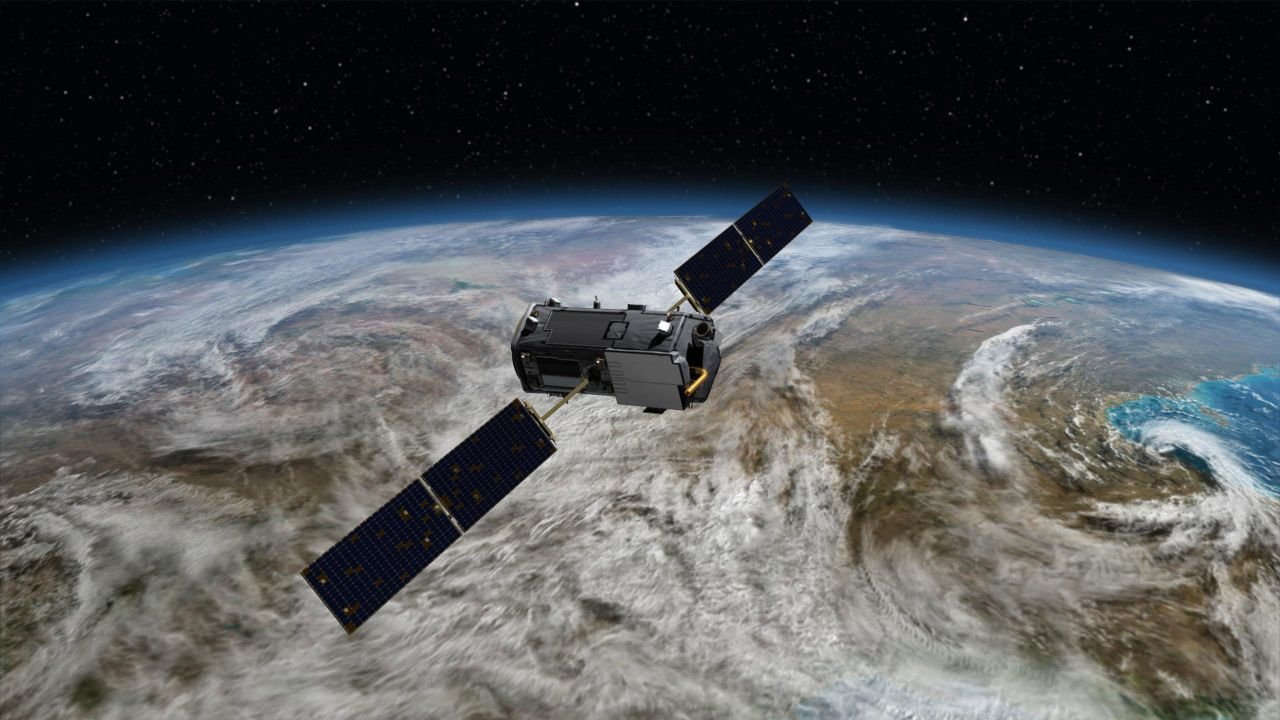
Rendering of NASA’s Orbiting Carbon Observatory (OCO-2) – NASA/JPL-Caltech
By Nicolas Menier,
Published by African in Space, 28 September 2025
NASA is facing backlash after reportedly being ordered to destroy a fully operational satellite that plays a crucial role in monitoring the Earth’s atmosphere. Imagine a perfectly good, high-tech spacecraft gathering invaluable data on carbon dioxide – a key player in climate change – only to be sent hurtling back into our atmosphere to burn up. This isn’t the plot of a sci-fi movie; it’s the reality for the Orbiting Carbon Observatory-2 (OCO-2) satellite.
The irony stings: after investing hundreds of millions of dollars in building and launching this satellite, the decision to terminate its mission threatens to unravel years of hard-won scientific progress on tracking greenhouse gases.
How OCO-2 transformed carbon dioxide monitoring
Back in 2009, NASA launched its first Orbiting Carbon Observatory to measure atmospheric carbon dioxide levels with unparalleled precision. The initial satellite faced a launch glitch and never reached its orbit, but undeterred, NASA launched OCO-2 in 2014. Since then, it has revolutionized how scientists understand carbon emissions around the globe.
OCO-2 captures high-resolution measurements of CO2, offering an extensive, detailed view of the gas’s distribution across the planet. This allows researchers to map emissions from cities, monitor the effects of climate policies like the Paris Agreement, and even track plant photosynthesis by observing a faint ‘glow’ that occurs when plants absorb sunlight.
This satellite didn’t just meet expectations; it became known as the gold standard for space-based carbon measurements. Data from OCO-2 has even supported farmers by informing them about crop health and helping predict drought conditions. It’s a reminder of how scientific tools can quietly work behind the scenes to protect our planet and support communities.
Why terminate a perfectly functioning satellite
So why would NASA consider destroying such a valuable spacecraft? The Trump administration reportedly ordered the termination of the OCO-2 satellite’s mission along with a related instrument aboard the International Space Station called OCO-3. This decision comes despite the satellites being fully operational and continuing to provide critical data.
Former NASA employee David Crisp, who helped design the instruments, shares in an NPR interview that current NASA staff have been instructed to prepare termination plans, although they are reluctant to speak openly about it. According to several sources, including anonymous NASA employees and scientists relying on the data, these plans suggest a premature end to what has been a highly successful mission.
This move has stirred outrage across the scientific community and government circles. Representative Zoe Lofgren, a leading Democrat on the House Committee on Science, Space, and Technology, warned NPR that halting these Earth-observing satellite missions without Congressional approval is illegal. She emphasized that the power to fund or cut programs rests with Congress, not the executive branch.
The cost of ending the mission early
The financial angle only deepens the puzzle. NASA poured about $750 million into the design, manufacture, and launch of OCO-2. In contrast, annual maintenance costs are just about $15 million—a small investment for such vital data that informs climate action and disaster response.
Ending the mission now would mean burning through resources that have already been spent, denying the global community access to valuable information about carbon cycles. Unlike OCO-3 on the ISS, which could be reactivated if funding is restored, destroying OCO-2 would be irreversible since the satellite would burn up in Earth’s atmosphere once its mission ends.
The implications stretch beyond numbers. It’s throwing away a tool that helps us understand the planet’s most pressing challenge – climate change.
Looking ahead: protecting essential climate data
NASA is working to secure private funding to keep OCO-3 operational once federal funds run out, but the future of OCO-2 hangs in the balance. Congress has voiced strong opposition to cutting these missions prematurely, but the path forward remains uncertain.
Personally, I’ve always believed that science is our best ally in tackling environmental crises. When I first learned about OCO-2’s role in mapping carbon in the atmosphere, it gave me hope that technology could provide the clarity and guidance needed to craft solutions. Seeing that such a powerful tool might be destroyed so abruptly feels like a setback not just for scientists, but for all of us.
What do you think? Should government agencies be allowed to terminate such valuable climate missions without public input? How much trust do we place in these crucial satellites to guide policy and action? Share your thoughts below and let’s keep the conversation going about protecting our planet’s future.
See: Original Article





